Ambio Black
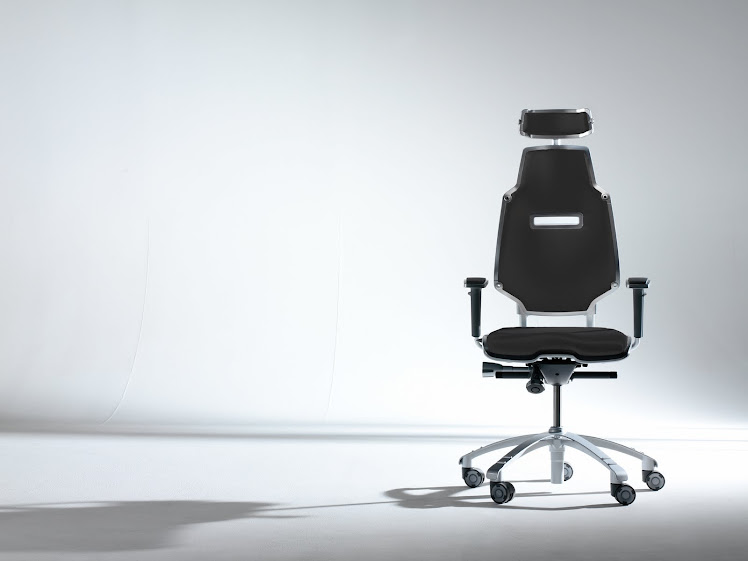
Monday, January 31, 2011
Multi-Gesture
Friday, January 28, 2011
NASA's First Space Station On Earth: A Look Inside the Sustainability Base
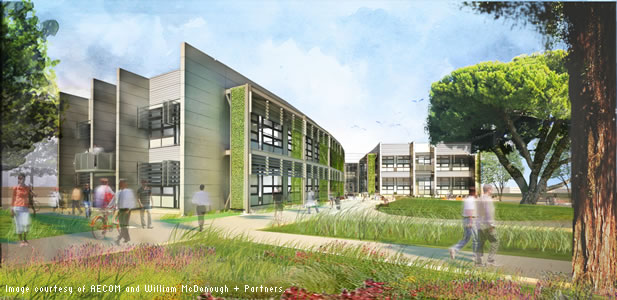
It's not surprising that forward-looking NASA recently set out to build the federal government's most sustainable building. What is surprising, however, is that this ultra-green experimental building, dubbed the Sustainability Base, will open its doors in May of this year--just two years after construction began. This week, we had the chance to sit in on the Autodesk Sustainability Summit and listen to some of the people involved in the planning process explain what went into NASA's newest Moffett, Calif., building. Here's what we learned.
NASA's had a number of requirements for its $20.6 million, Ames Research Center-based building: a healthy working environment, excellent air quality and natural light, low energy use, intelligent controls, a flexible building system, the integration of NASA's emerging technology, and the most challenging requirement of all--LEED Platinum status as a baseline for sustainability.
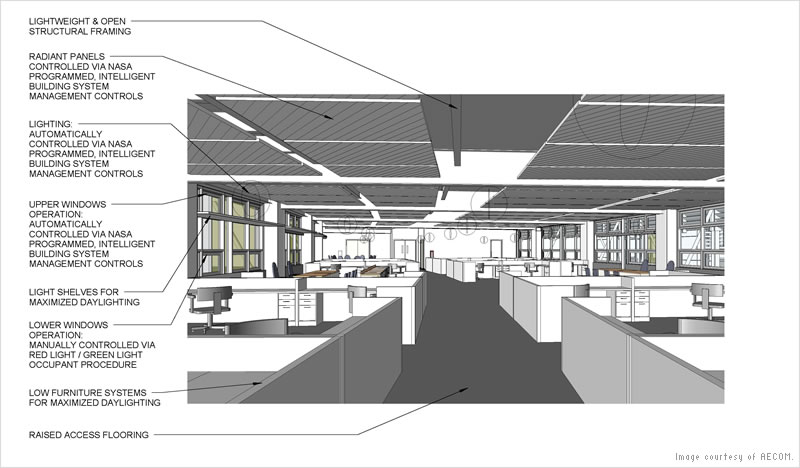
'NASA was used to being responsible in outer space, and they wanted to
bring it back to Earth,' explains June Grant, an AECOM Project Manager
who helped design the project.
So AECOM and William McDonough + Partners got to work designing the two-story, two-wing building, which will consist of approximately 50,000 square feet of space and house 225 workers when it is complete. Using Autodesk software, the team was able to design a a steel frame exoskeleton-equipped structure with high ceilings to ensure daylight, natural cross-ventilation, control systems that react to the environment (by automatically adjusting the building temperature), and more.
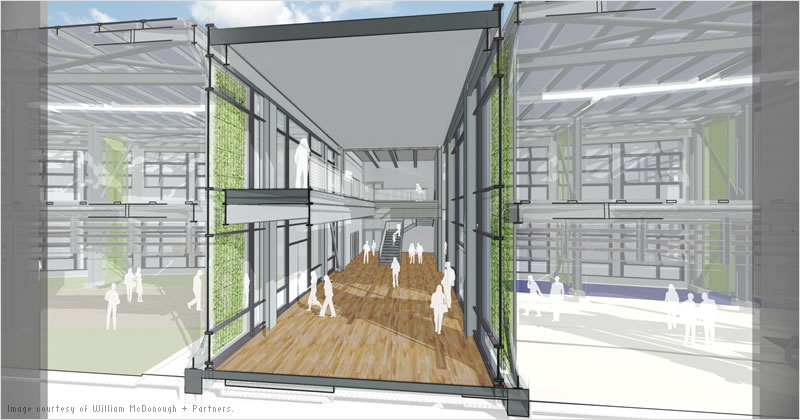
One of the biggest challenges for AECOM was figuring out how to use the building's ceiling as an energy source--one of NASA's requests. Whatever system was chosen had to work in a climate that could start out at six degrees in the morning, shoot up to 100 degrees in the afternoon, and then drop back down in the evening. The solution: radiant ceiling panels in office spaces, heating panels on side walls, and raised floors to offer easy access to utilities. In non-office spaces that won't always be occupied, AECOM chose radiant concrete ceilings and natural ventilation.
And of course, plenty of futuristic NASA technology was added into to the building. 'The idea was, what if we could imagine NASA's first space station on Earth?,' explains David Johnson, a partner at William McDonough + Partners.
NASA-designed technology in the building includes the intelligent building controls, an inductive monitoring system that detects when something in the building isn't working, and a forward osmosis water recycling system originally designed for the International Space Station (NASA wants to test the technology on Earth before sending it to space).
The building will use 90% less potable water than a similarly-sized conventional building. NASA's Sustainability Base will also create 22% more energy than it concerns thanks to a combination of solar panels, a Bloom Box fuel cell device, and a geothermal system that will send naturally cooled ground water to interior ceiling panels.
And this is just the beginning for the test bed building. 'NASA is going to have a building used to develop and test technology that will carry on for 50 to 100 years,' Johnson says. Regardless of whether NASA continues ambitious missions into space, then, the agency will at least have a rich source of innovation on Earth.
Ariel Schwartz can be reached on Twitter or by email.
Wednesday, January 26, 2011
Laboratory safety begins with design
Laboratory safety is often treated as a specialist area of occupational safety due to the potential harm from the material being handled but also because the laboratories often exist in universities, isolated work environments in many ways. Kansas State University (KSU) is obviously very proud of its Biosecurity Research Institute that, it claims, has considered all elements of safety in all stages of construction and operation.
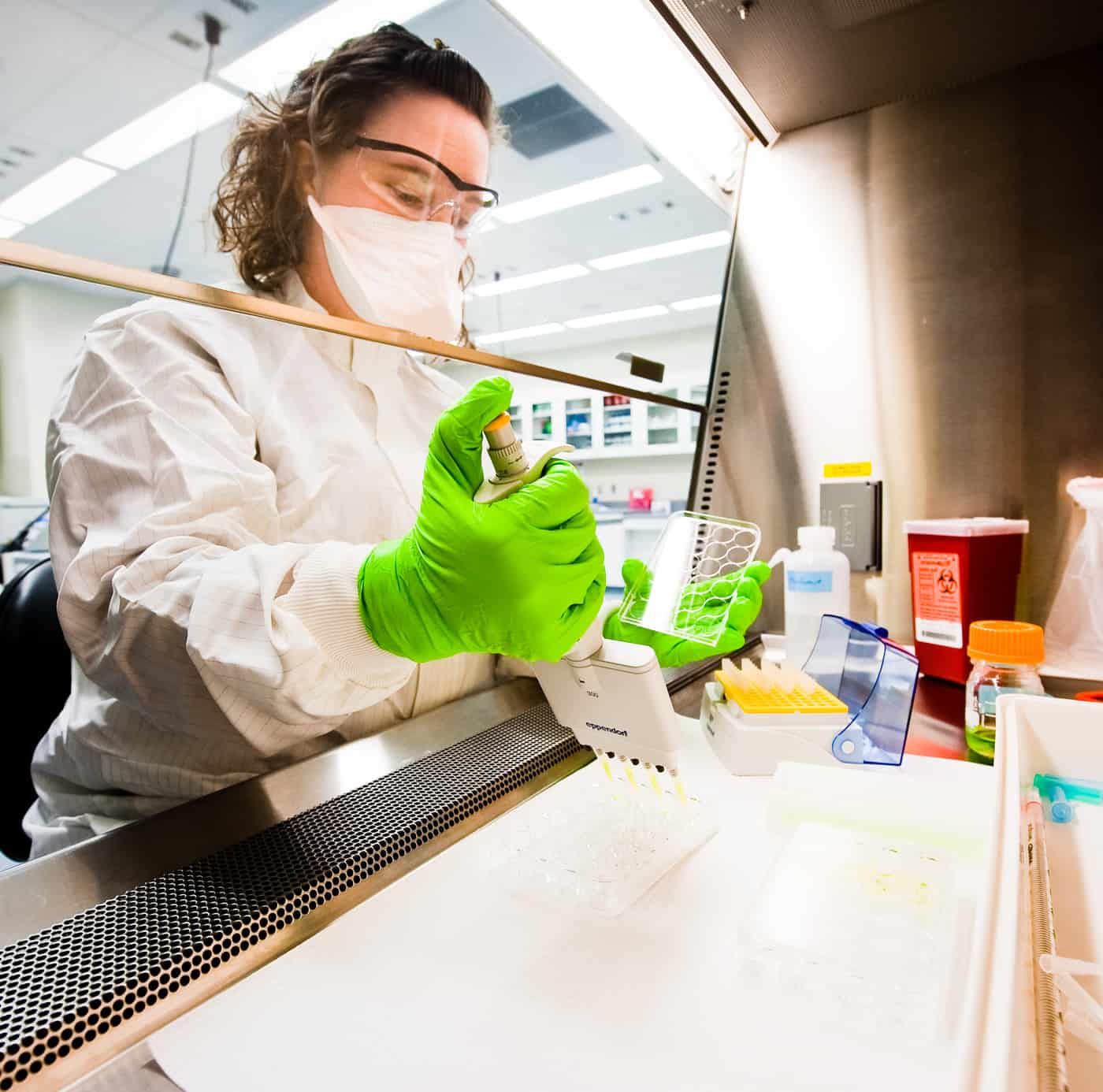
A researcher works with materials in a biosafety cabinet in the Biosecurity Research Institute at Kansas State University. A biosafety cabinet is a safety enclosure that uses HEPA filters and directional airflow to contain pathogens.
The article that KSU has released on line is a little promotional in tone but there is enough information in it to illustrate the high level of planning that was given to the project. There may not be much new information for those already involved in laboratory safety but it is a useful example of the need for preparatory work in establishing a safe working environment that also ensures product integrity.
Monday, January 24, 2011
Somewhere Apple Execs Are Smiling: iPads Are Now Mandatory at This Private School
There's a new back-to-school necessity for certain Tennessee students--and it ain't more No. 2 pencils.

Surely you remember those back-to-school necessities: pencils, paper, three-ring binders. Now comes a new, decidedly not analog required tool for certain students. In the fall, students at the appropriately named Webb School, a private school in Knoxville, Tenn., will be hopping from Staples to the Apple Store. That's because the school has decided to make it a requirement--a requirement--for each of its 4th-12th graders to have an iPad next year.
'A student who doesn't already own one can lease one,' KSLA News of Shreveport, La., informs us. The school's technology director explained the scheme: a three-year lease at about $200 a year, paid in monthly installments.
A statement on the Webb School's website highlights the importance of technology to the school's mission:
'Webb School gives great thought and invests significant resources into understanding what are the most relevant and important areas of study for a young person today and what are the best ways to teach that material. The world continues to change at an exponential rate, and keeping current with the knowledge and skill sets that will be essential for tomorrow’s leaders is critical ... Experiential, collaborative learning and the increasing role of technology are both at the heart of how Webb students acquire new information and thinking strategies that can be retained and applied over time.'
KSLA News found an English teacher, of all people, who was gleeful about the demise of books in class. 'Once I explored it,' said the teacher, Elli Shellist, 'I was really excited, because there are things we can do better on this than we can on a paper text.'
Not all tech is welcome at Webb, however: School officials say Facebook and Twitter will be blocked on campus.
[Images: Flickr user notionscapital; Webb School]
Friday, January 21, 2011
Deloitte: 2011 Will Be The Year Of The Tablet (Say Goodbye To Your Laptop)
Deloitte, the multi-faceted professional services company that’s perhaps best known for its annual Football Money League study, says that 2011 will be the year that computers stop being computers. The agency says that more than 50 percent of all “computing devices” sold this year will be non-PCs. You know, things like tablets, smartphones, and the like. So not only are the days of big, hulking desktops behind us (with the exception of gaming PCs, like the Digital Storm Black Ops), but other traditional computers, like your friendly neighborhood laptop, are on the way out.
There’s two other “big” predictions from Deloitte in this release.
One is that there will be zero operating system standardization when it comes to smartphones and tablets this year. I suppose that’s true, but there sorta is standardization in that there’s only two real options out there: iOS and Android. And really, both are fine operating systems; it’s not as if you’re walking in with a loss if you pick one over the other.
The other one is that enterprise will take tablets seriously this year. Remember netbooks? Those were big for about a minute (well, a few years), and then tablets showed up on the scene, pretty much out of the blue, and flashed that Men In Black memory-easer on us all, making us forget notebooks ever existed. Enterprise never really “took” to notebooks, but that will not be the case with tablets, where it’s predicted that enterprise will purchase a solid 25 percent of all tablets this year.
"
Thursday, January 20, 2011
Ergo Myths
Approximately one percent of the population gets surgical treatment for carpal tunnel syndrome (CTS), and in about one quarter of the cases, both hands are operated on. In the United States, there are approximately 400,000 carpal tunnel surgeries per year; it is among the most frequently performed operations in the U.S. Often, people who have had the surgery once will be treated with multiple subsequent surgeries. Although surgery may temporarily relieve some of the symptoms, it cannot cure the ailment.
To solve the problem, we must first understand the root cause. CTS is a repetitive strain injury that occurs when the median nerve is compressed at the wrist, leading to pain and muscle weakness. It is often associated with performing rapid, repetitive tasks and maintaining constrained postures. Although information about the risk factors is available, individuals often turn to surgery to relieve the pain. The common response from doctors when asked about carpal tunnel surgery is to “change your career and schedule surgery”; they understand that if patients do not appropriately address the root cause(s), CTS symptoms often return within a year or two of the surgery.
So what can we do to prevent carpal tunnel surgeries and ensure that no one must undergo multiple surgeries? Initially, many mild carpal tunnel syndrome sufferers change hand use patterns and postures at work or avoid hand activities to minimize pain, if possible. This does not mean switching mousing hands so that you end up with CTS in both hands; rather, take regular breaks from repetitive tasks. Or, change or rotate jobs to avoid the continued repetitive stress tasks. Also try adjusting the frequency of repetitive movements and increasing the number of rest periods between the movements.
The key to conservative CTS treatment is ergonomics. It is important to fit the job to the person, and not the person to the job. Having a properly designed workstation reduces the amount of effort required to maintain a proper working position. While the office setting is where CTS is most common, it is beginning to occur more often in industrial environments. Although the concepts of workstation design are similar in both settings, the guidelines differ significantly. The focus of CTS prevention should be on workstation improvements, as surgery alone will not change what people do or how they do it.
Wednesday, January 19, 2011
New RH Chairs Webstore Launched in the United States by RGP Ergo
Posted by Greg Murray on January 19th, 2011
FOR IMMEDIATE RELEASE
The new RH Chairs web store is now open for customers in the United States. Found at www.rgpergo.com the new website is simple and easy to navigate, and offers the Ambio, Extend and Logic lines of office seating. In addition, the “Find an Ergonomic Professional” search facility allows consumers to identify Board Certified Ergonomic Professionals in their area with the right skills to meet their ergonomic assessment requirements
About RH Chairs
RH has built its reputation by adhering to strict principles on both the environment and how design impacts on the performance of individuals, organizations and society. Since 1977, when RH was started in Sweden, the company has been one of the world’s foremost innovators in the way it minimizes its impact on the environment. This approach extends throughout every aspect of the organization and its products; from the use of materials and production processes, to logistics to energy consumption. RH is one of the first companies in its field to achieve certification in accordance with the Environmental Product Declaration (EPD) system, a global standard aimed at meeting the demand from customers for better information and more sophisticated environmental standards.
Today RH is known by ergonomics professionals, physio-therapists, occupational therapists and other experts both in Sweden and The United States. We even have a technology, 2PP™, (two-point principle) that puts our philosophy into practice for all of our seating systems.
RH Chairs is a division of Scandinavian Business Seating, with manufacturing plants in Sweden and Norway, and head offices in Oslo, Norway. The company has more than 600 employees world-wide. RH Chairs is distributed in the United States exclusively by RGP Ergo, Inc.
About RGP Ergo
RGP Ergo, exclusive distributor of RH chairs in North America has been in the ergonomic chair distribution business for fifteen years. Located in Bristol, Rhode Island, RGP Ergo serves the ergonomic community with its line of ErgoPro seating. Distribution inquiries should be directed to Greg Murray at the contact information below.
RGP Ergo
Greg Murray 401-254-9695 Ext 5550
greg@rgpergo.com
Europe’s SARTRE Project Successfully Tests Self-Driving Car
A new European government initiative called SARTRE (SAfe Road TRains for the Environment) is working on self-driving auto technology that will allow vehicles to drive along Europe’s highways in autonomous road trains. This week, the team behind SARTRE conducted their first real world test, in which a Volvo S60 followed a lead truck around the automaker’s test facility near Gothenburg, Sweden.







Read the rest of Europe’s SARTRE Project Successfully Tests Self-Driving Carhttp://www.inhabitat.com/wp-admin/ohttp://www.inhabitat.com/wp-admin/options-general.php?page=better_feedptions-general.php?page=better_feed
Permalink |
Add to
del.icio.us |
digg
Post tags: road test SARTRE, road test self driving cars, road trains eu, SARTRE emissions, SARTRE eu project, SARTRE project, SARTRE road trains, SARTRE self driving cars
Monday, January 17, 2011
Shock Study: Sitting In Front Of A Screen All Day Is Hazardous To Your Health

How about that, all of this technology is killing us. That’s what researchers at University College London have said, in so many words, in a recent study that tracked screen users’ health (“screen users” being a catch-all term for people who do anything screen-based, that is, use a computer, watch TV, fiddle with their iPhone, etc.). It turns out that people who sit in front of a computer (and the like) all day are 125 percent more likely to suffer from a heart-related death. That’s nice.
“Surely that can’t happen to me. Yes, I spend all day in front of my computer, but I also jog for an hour every other day. I’m cool, right?”
No~!
The data shows that exercise made no difference in users’ health; people who exercise are just as likely to have health problems—death is a pretty big health problem—as people who don’t exercise.
And what can we blame, and then outlaw, for this massive health crisis?
Sitting down. It’s high time we all write our congressmen to ask them to legislate against sitting down too long.
It’s the “leaning forward” position that’s particularly nefarious. You do this whenever you frag fellow fools in Call of Duty on Xbox Live, whenever you watch The Office on Hulu.
"
Friday, January 14, 2011
Researchers develop 'liquid pistons' for cameras, medical use
 It may still be years away from any sort of practical use, but a team of researchers at the Rensselaer Polytechnic Institute have developed some so-called 'liquid pistons' that they say could shake up everything from cameras to medical devices. Those pistons consist of some droplets of 'nanoparticle-infused ferrofluids,' which are able to oscillate and precisely displace a surrounding liquid. In the case of a camera, that could be used for a liquid lens of sorts (as seen at right), and the researchers say the same technology may one day even be used for implantable eye lenses. The possibilites don't end with optical uses, though -- the researchers say that the precise ability to pump small volumes of liquid could also be used for implantable drug-delivery systems that would be able to deliver tiny doses at regular intervals. Of course, there's no indication as to when any of that might happen -- in the meantime, you can occupy yourself with the brief but oddly hypnotic video after the break.
It may still be years away from any sort of practical use, but a team of researchers at the Rensselaer Polytechnic Institute have developed some so-called 'liquid pistons' that they say could shake up everything from cameras to medical devices. Those pistons consist of some droplets of 'nanoparticle-infused ferrofluids,' which are able to oscillate and precisely displace a surrounding liquid. In the case of a camera, that could be used for a liquid lens of sorts (as seen at right), and the researchers say the same technology may one day even be used for implantable eye lenses. The possibilites don't end with optical uses, though -- the researchers say that the precise ability to pump small volumes of liquid could also be used for implantable drug-delivery systems that would be able to deliver tiny doses at regular intervals. Of course, there's no indication as to when any of that might happen -- in the meantime, you can occupy yourself with the brief but oddly hypnotic video after the break.Continue reading Researchers develop 'liquid pistons' for cameras, medical use
Researchers develop 'liquid pistons' for cameras, medical use originally appeared on Engadget on Thu, 13 Jan 2011 10:11:00 EDT. Please see our terms for use of feeds.
Permalink PhysOrg |
PhysOrg |  Rensselaer | Email this | Comments"
Rensselaer | Email this | Comments"
Vitality GlowCap review
The Vitality GlowCap concept's been floating about for years now, but it still slightly blows our minds -- you stick a tiny, battery-powered wireless computer on top of your pill bottle, which reminds you to take your medicine on time. Well, it turns out they aren't exactly a concept these days, as you can buy one for $10 with a $15 monthly plan, and we've actually spent the past month living with the chirping, glowing, AT&T-connected device, keeping a journal all the while. After the break, find out what a life-saving nag feels like.
Note: Amazon's actually out of stock at the time of this writing, but Vitality says a new shipment should arrive tomorrow.
Continue reading Vitality GlowCap review
Vitality GlowCap review originally appeared on Engadget on Thu, 13 Jan 2011 14:21:00 EDT. Please see our terms for use of feeds.
Permalink | Vitality | Email this | Comments"
Vitality | Email this | Comments"







